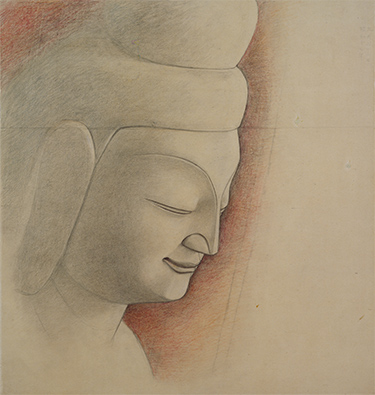The half century from about 1910 to the 1960s was a period in which Japanese intellectuals, art lovers, and artists were fascinated by classic Asian art. An interest in things Chinese was part of Japanese tradition, but during this period the “Asia fever” reached a new peak. Archeological relics and ancient works of art were brought to Japan from the Korean Peninsula and China. Business leaders competed fiercely to acquire them. Lelang lacquerware from the Han dynasty was excavated in Pyongyang. Surveys of the Cizhou and Ding kilns in Hebei were conducted. Breathtaking works that had been handed down for generations were imported. These included Shang bronzes, Tang sancai ceramics, Song porcelains, Yuan blue-and-white and Ming underglaze copper red ceramics, and dearly loved rattan baskets for green tea from China, as well as Yi-dynasty white porcelains from Korea. Having seen these works, painters and craft artists spread their creative wings and soared toward Asia.
Artists saw the stone Buddhas in the Yungang Grottoes in Datong and were reminded of their connection to Buddhist culture in the Asuka Period in Japan. Their eyes were drawn to the “China dress” (cheongsam), a fashion in which they felt a new breath of fresh air from Asia. That longing for Asia began to fade from the main stage around 1960, but remained deeply rooted. Its effects can still be seen in the works of three contemporary artists displayed in the new annex gallery.
